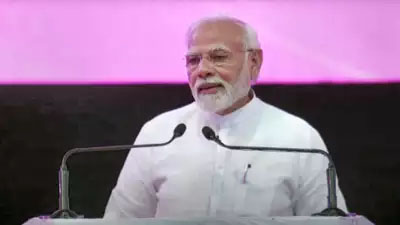‘Disinformation’ (Russian deziinformatzia) is a concept which finds mention in Sun Tzu’s Ping Fa (Principles of War). Tzu believed “all warfare is based on deception, feign incapacity when capable of being able to attack”. Even before Sun Tzu, Kautliya in Arthashastra supported disinformation as a warfare tool within his concept of koota yuddha (unprincipled warfare) as distinguished from dharma yuddha (righteous warfare).
India’s disinformation often amounts to stark lies. They forget the caveat by Richard Deacon
“ Truth twisting…unless it is conducted with caution and great attention to detail, it will inevitably fail, if practiced too often… It is not the deliberate lie which we have to fear (something propaganda), but the half-truth, the embellished truth and the truth dressed up to appear a something quite different’ (The Truth Twisters, London, Macdonald & Company (Publishers) Limited, 1986/1987, p. 8).
The Indian media ebulliently publishes canards about “atrocities of Pak forces . Benglais know India’s hidden face. Bangladeshi Hindus desecrated the Holy Quran by putting it at the feet of an idol. This triggered riots in BD. Many times Indian soldiers crossing the India-BD border were shot dead by BD rifles. Bangladeshis resent that India refused to supply them onions and vaccines in violation of signed accords
India is never tired of its disinformation campaign against Pakistan (Pakistan tries to justify 1971 Bangladesh genocide: Report, ANI, 18 April 2022). . The report inter alia stated. “…the Pakistan conflict led to the massacre estimated three million East Pakistanis…the ethnic cleansing of 10 million ethnic Bengalis who fled to India and the rape of at least 200000 women,while some estimates put the number of rape victims at closer to 400, 000” The ANI report banks on pro-India “Thinktanks” like The Hindu American Foundation, Gateston Institute and Stitchting BASUJ (Bangladesh Support Group). Another report dated 1 July 2023 tried to revives myths about “genocide and rapes by Pakistani forces” in the 1971 “armed conflict.” India’s The Print also echoed the state sponsored myths. For instance it stated, “Also, countries like China and The United States suppressed the genocide reports as well, provoking both activists and academics. Thus, in turn, the Bangladeshi uprising of 1971 has been reduced to a civic-political demand.Recognition of the brutal massacre and the qualitative widening of the current legal understanding of genocide during the Liberation Struggle of Bangladesh is ethically demanded”. The Print however concluded its report with disclaimer: “This report is auto-generated from ANI news service. The Print holds no responsibility for its content”.
Sirmila Bose in her 2011 book Dead Reckoning: Memories of the 1971 Bangladesh War has exploded these myths.
Her book is the first of its kind based entirely on primary sources and eyeball-to-eyeball interviews. She points out “Many ‘facts’ had been exaggerated, fabricated, distorted or concealed. Many people in responsible positions had repeated unsupported assertions without a thought; some people seemed to know that the nationalist mythologies were false and yet had done nothing to inform the public”.
For one thing, the Pakistan-India conflict in 1971 was not an ‘armed conflict. Pakistan Army units in East Pakistan were not armed to fight a war. The troops in East Pakistan were on “internal security duty”. Pakistan’s 16 Division had eight tanks. Pakistan’s 9 Division had two 105mm guns and four 120mm mortars. The Pakistan Navy in East Pakistan had no naval ships, only a few gunboats and a diesel-electric submarine. And, Pakistan Air Force in East Pakistan had a dozen F-86 Sabres, transonic jet fighters.Through the Ganga hijacking drama, India blocked Pakistan’s flight to East Pakistan.
As of March 1971, the total strength of Pak forces was 12,000. As of December 16, the total strength of Pakistani troops in East Pakistan was 34,000 of which only 23,000 were infantry.
On the other hand, the total strength of Indian troops ranged between 150,000 and 400,000 plus 100,000 Indian-trained Mukti Bahni. East pakistan was invaded under Indira Gandhis’s orders and Indian Parliament’s resolution.
The invaders included India’s 4 Infantry Division, 9 Infantry Division, 20 Mountain Division, 6 Mountain Division, 8 Mountain Division, 57 Mountain Division and 23 Division. The Indian Air Force deployed 1 Sukhoi Squadron, 3 Gnat Squadrons, 3 MiG-21 Squadrons and 4 Hunter Squadrons. The Indian Navy deployed Aircraft Carrier Vikrant comprising 47 aircraft, eight destroyers, two submarines and three landing ship tanks (INS Khukri, a Type 14 Blackwood-class, anti-submarine frigate, was torpedoed and sunk by a Pakistan Navy submarine Hangor, Daphne-class, shaft horsepower submarine-the first warship sunk by a submarine since WWII).
On June 6 in 1972, The Guardian ran a story titled ‘The Missing Millions’ which “asserted that field investigations by the Home Ministry of Bangladesh had turned up about 2,000 complaints of deaths at the hands of the Pakistan Army.” Of the 2,000 complaints filed at the ministry, a thousand had actually accused the Mukti Bahini (Martin Woollacott, Dead Reckoning by Sarmila Bose – review. A long-overdue study of Bangladesh’s war of independence, The Guardian dated July 1, 2011).
To woo Bangladesh, the Indian press almost overlooks persecution of opposition by the ruling party. The Bangladesh government bought the latest gadgets from Israel to spot key protesters. For instance, Ashraful Alom aka Hero Alom, an independent candidate in the Dhaka-17 parliamentary by-election was lynched by by Awami League supporters during the vote on July 17. Over thirteen foreign missions in Bangladesh including the USA, United Kingdom and European Union condemned the incident.
The Indian media ebulliently publishes canards about “atrocities of Pak forces . Benglais know India’s hidden face. Bangladeshi Hindus desecrated the Holy Quran by putting it at the feet of an idol. This triggered riots in BD.
Many times Indian soldiers crossing the India-BD border were shot dead by BD rifles. Bangladeshis resent that India refused to supply them onions and vaccines in violation of signed accords.























